High-Efficiency Bidirectional LLC Resonant Converter with Primary Auxiliary Windings
Abstract
:1. Introduction
2. Proposed Bidirectional LLC Resonant Converter
2.1. Forward Operation Mode
2.2. Reverse Operation Mode
2.3. Equivalent Circuits of the Proposed Converter
3. Experimental Results
4. Discussion
5. Conclusions
6. Patents
Author Contributions
Funding
Conflicts of Interest
References
- Wang, K.; Zhu, L.; Qu, D.; Odendaal, H.; Lai, J.; Lee, F.C. Design implementation and experimental results of bidirectional full-bridge dc/dc converter with unified soft-switching scheme and soft-starting capability. IEEE PESC 2000, 2, 1058–1063. [Google Scholar]
- Krismer, F.; Biela, J.; Kolar, J.W. A Comparative Evaluation of Isolated Bi-directional DC/DC Converters with Wide Input and Output Voltage Range. IEEE IAS 2005, 1, 599–606. [Google Scholar]
- He, P.; Khaligh, A. Comprehensive Analyses and Comparison of 1 kW Isolated DC–DC Converters for Bidirectional EV Charging Systems. IEEE Trans. Transp. Electrif. 2017, 3, 147–156. [Google Scholar] [CrossRef]
- Liu, Z.; Li, B.; Lee, F.C.; Li, Q. Design of CRM AC/DC Converter for Very High-Frequency High-Density WBG-Based 6.6 kW Bidirectional On-Board Battery Charge. In Proceedings of the 2016 IEEE Energy Conversion Congress and Exposition (ECCE), Milwaukee, WI, USA, 18–22 September 2016. [Google Scholar]
- Chen, W.; Rong, P.; Lu, Z. Snubberless Bidirectional DC–-DC Converter With New CLLC Resonant Tank Featuring Minimized Switching Loss. IEEE Trans. Ind. Electron. 2010, 57, 3075–3086. [Google Scholar] [CrossRef]
- Wei, C.; Shao, J.; Agrawal, B.; Zhu, D.; Xie, H. New Surface Mount SiC MOSFETs Enable High Efficiency High Power Density Bi-directional On-Board Charger with Flexible DC-link Voltage; IEEE APEC: Anaheim, CA, USA, 2019. [Google Scholar]
- Lee, J.Y.; Jeong, Y.S.; Han, B.M. A Two-Stage Isolated/Bidirectional DC/DC Converter with Current Ripple Reduction Technique. IEEE Trans. Ind. Electron. 2012, 59, 644–646. [Google Scholar] [CrossRef]
- Kim, E.S. Bidirectional LLC Resonant Converter. Patent pending (10-2019-0011426), 29 January 2019. [Google Scholar]

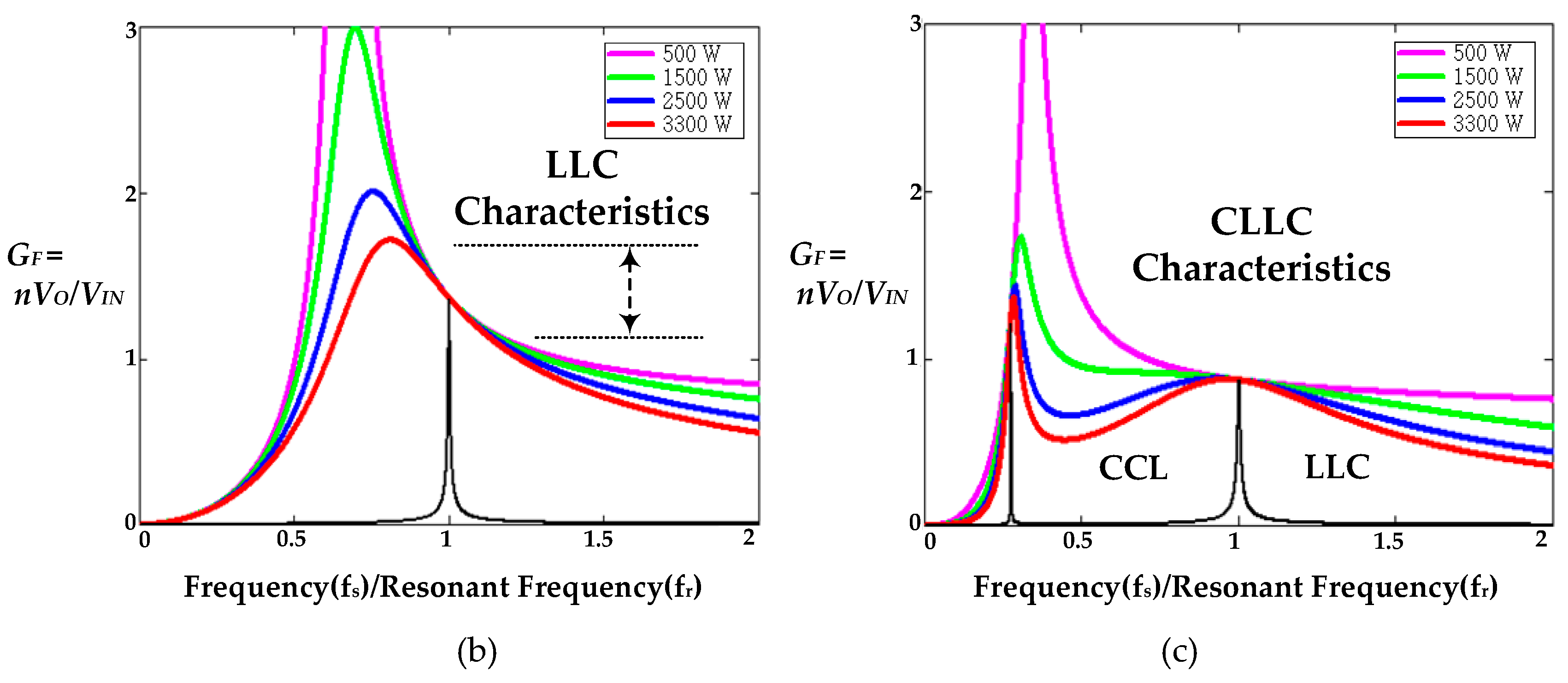
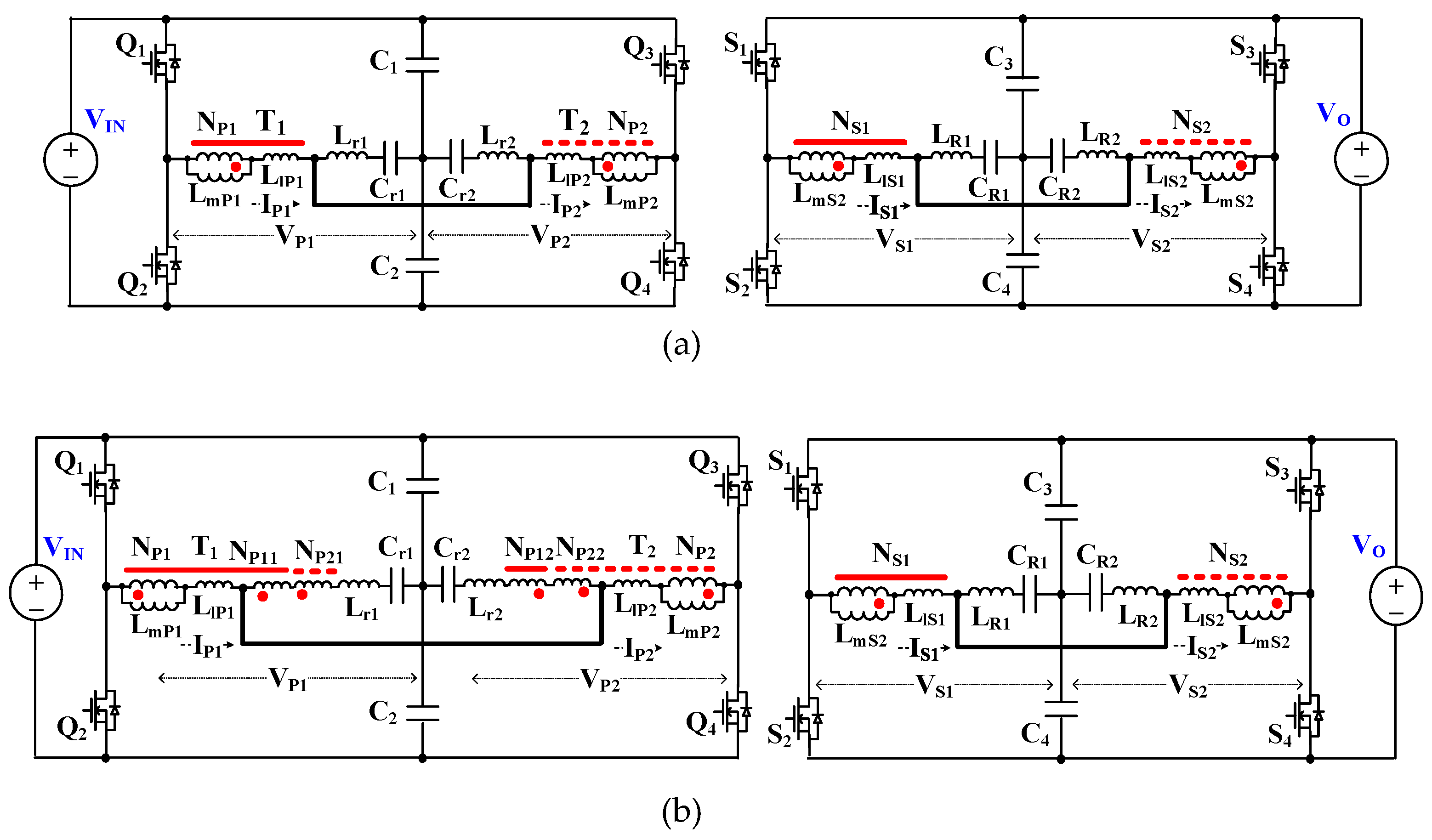
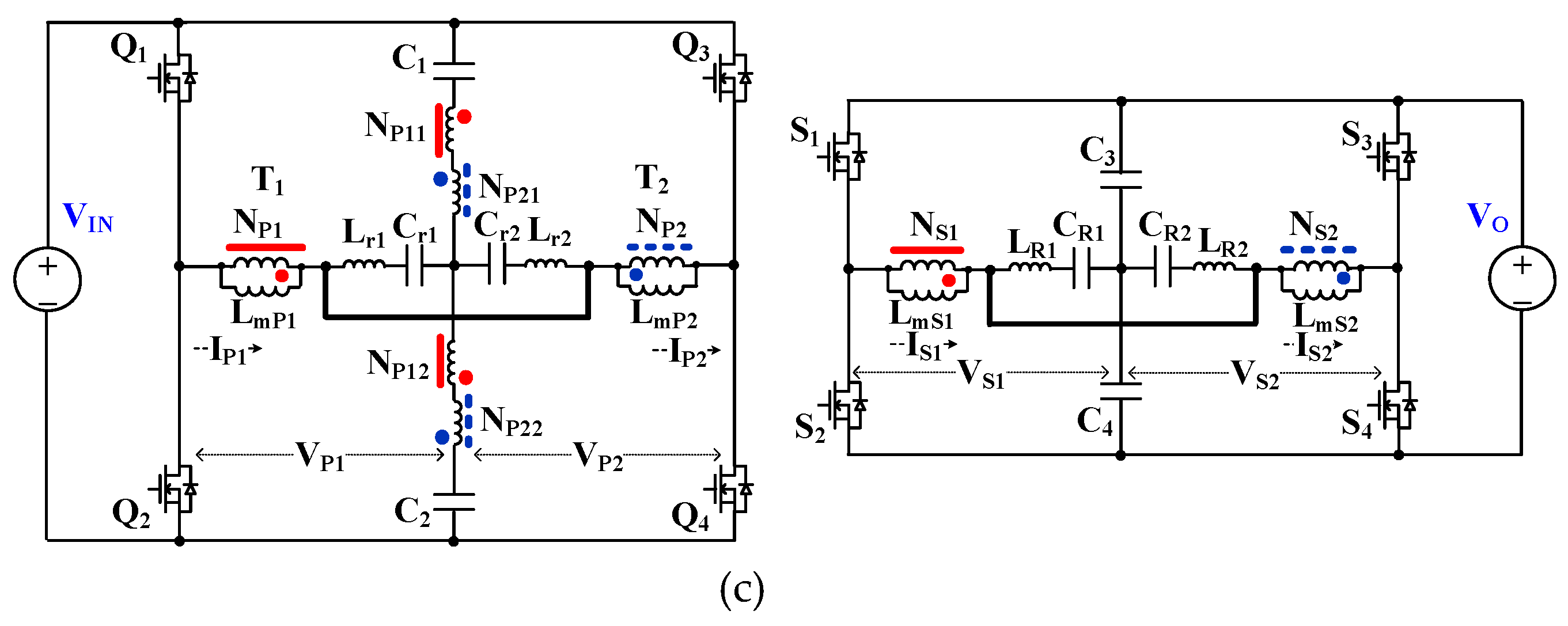
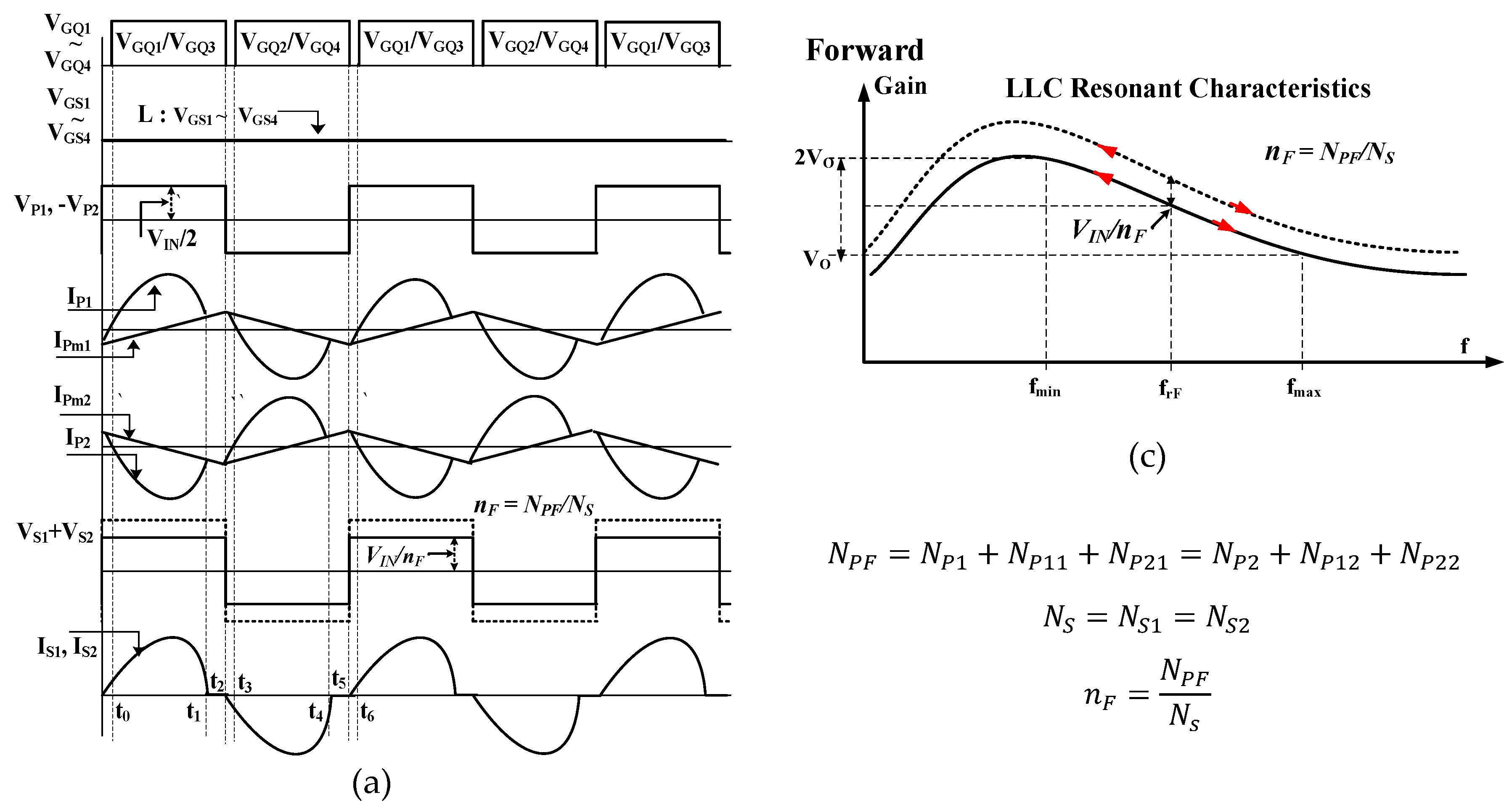
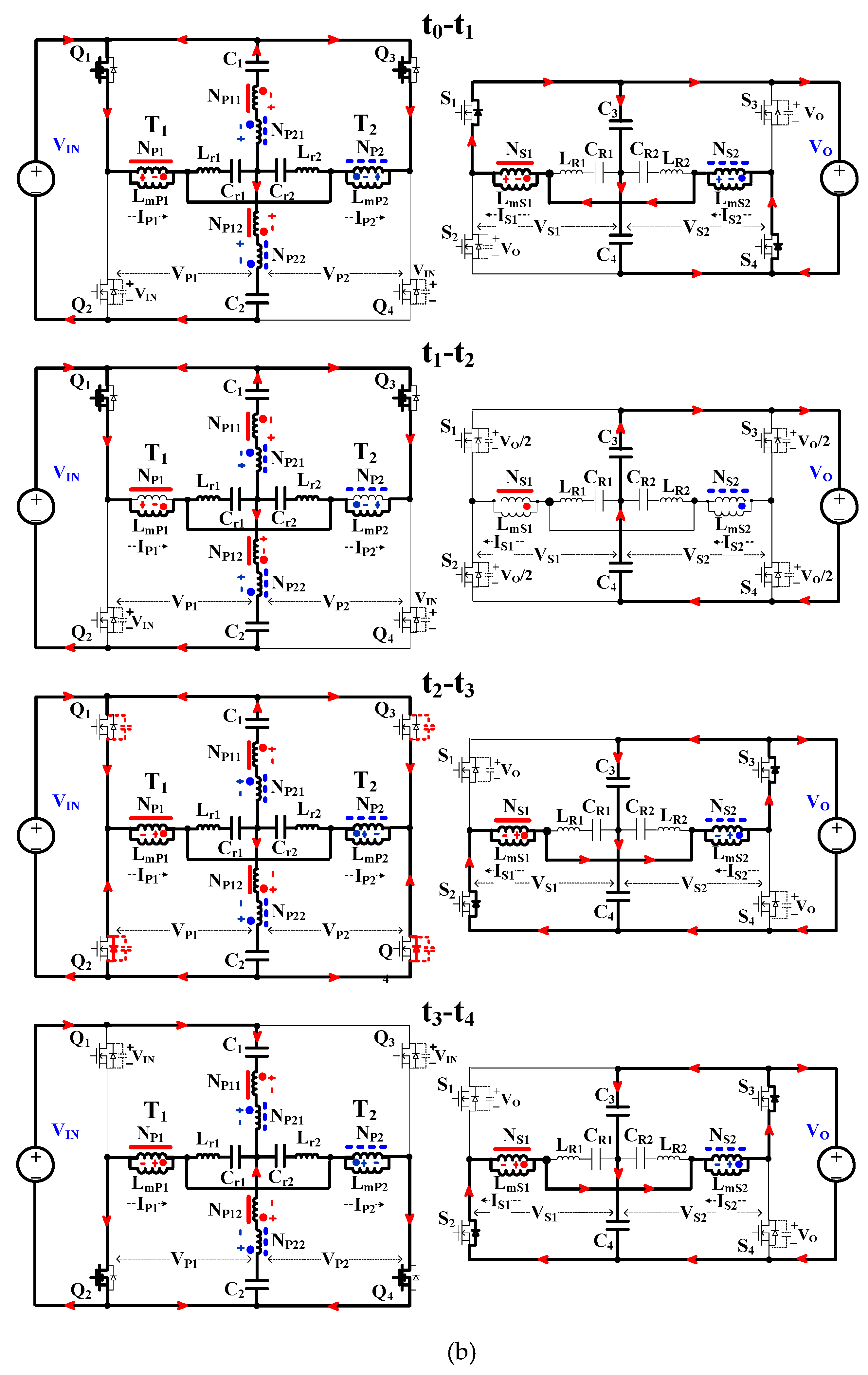
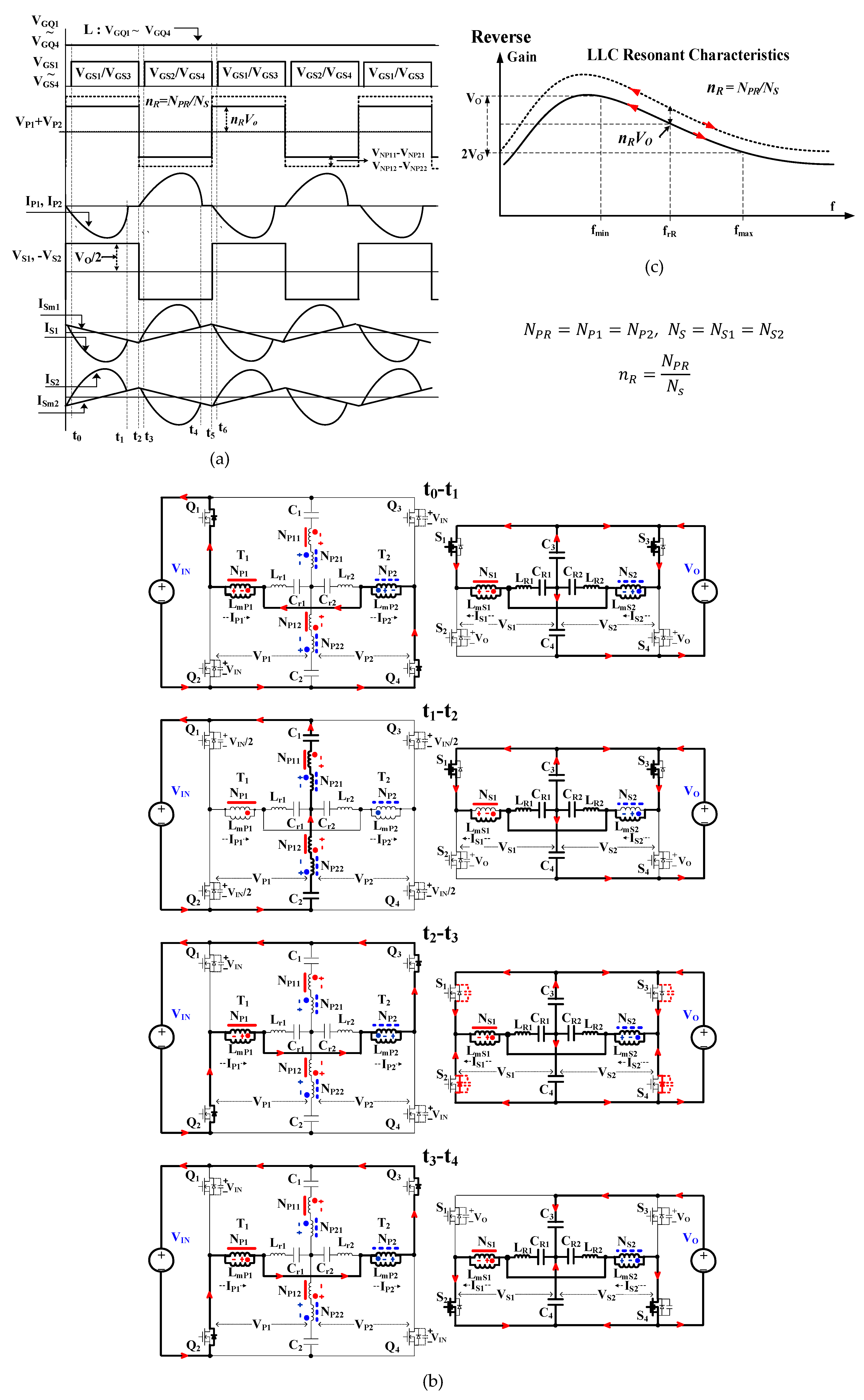
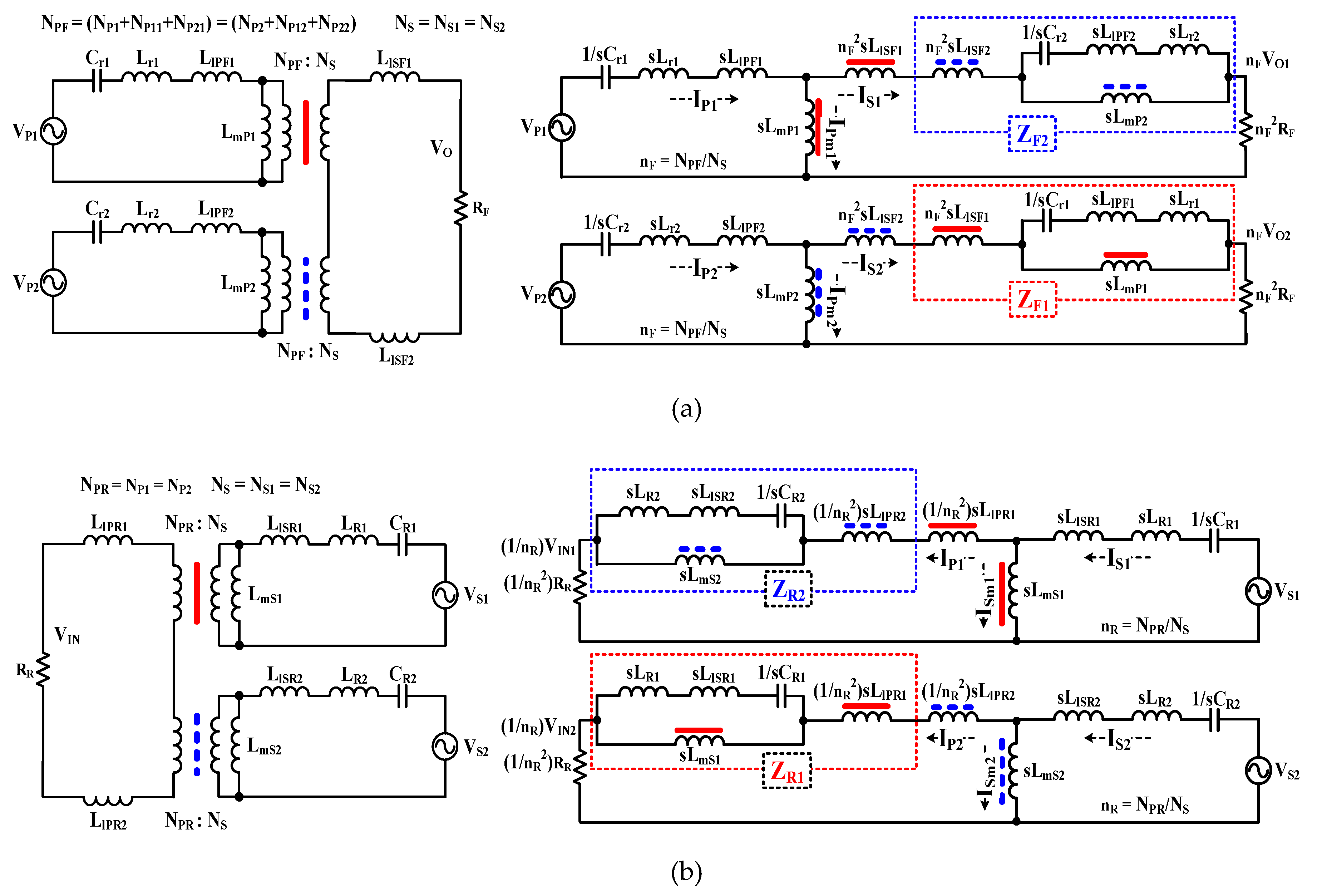



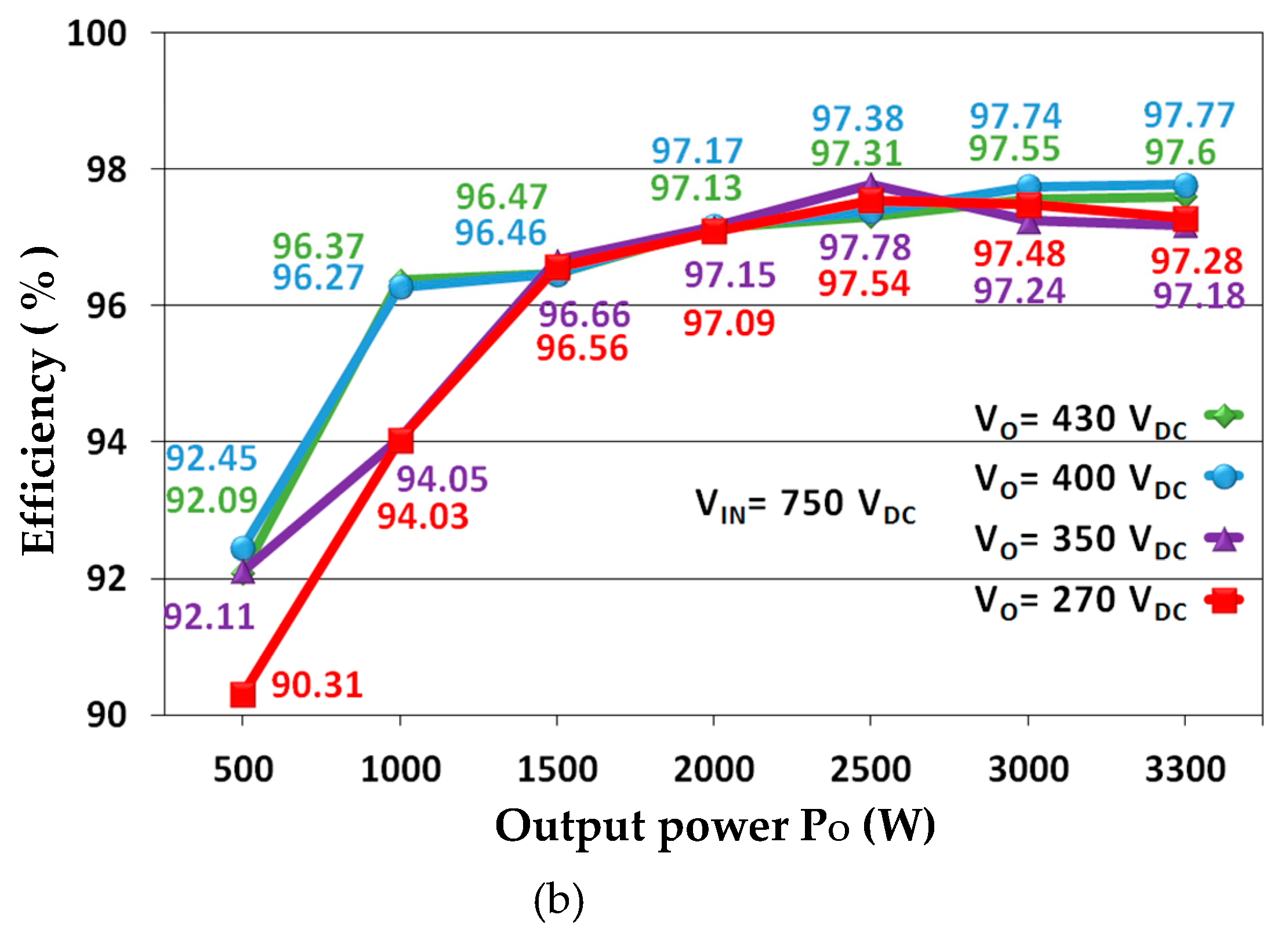
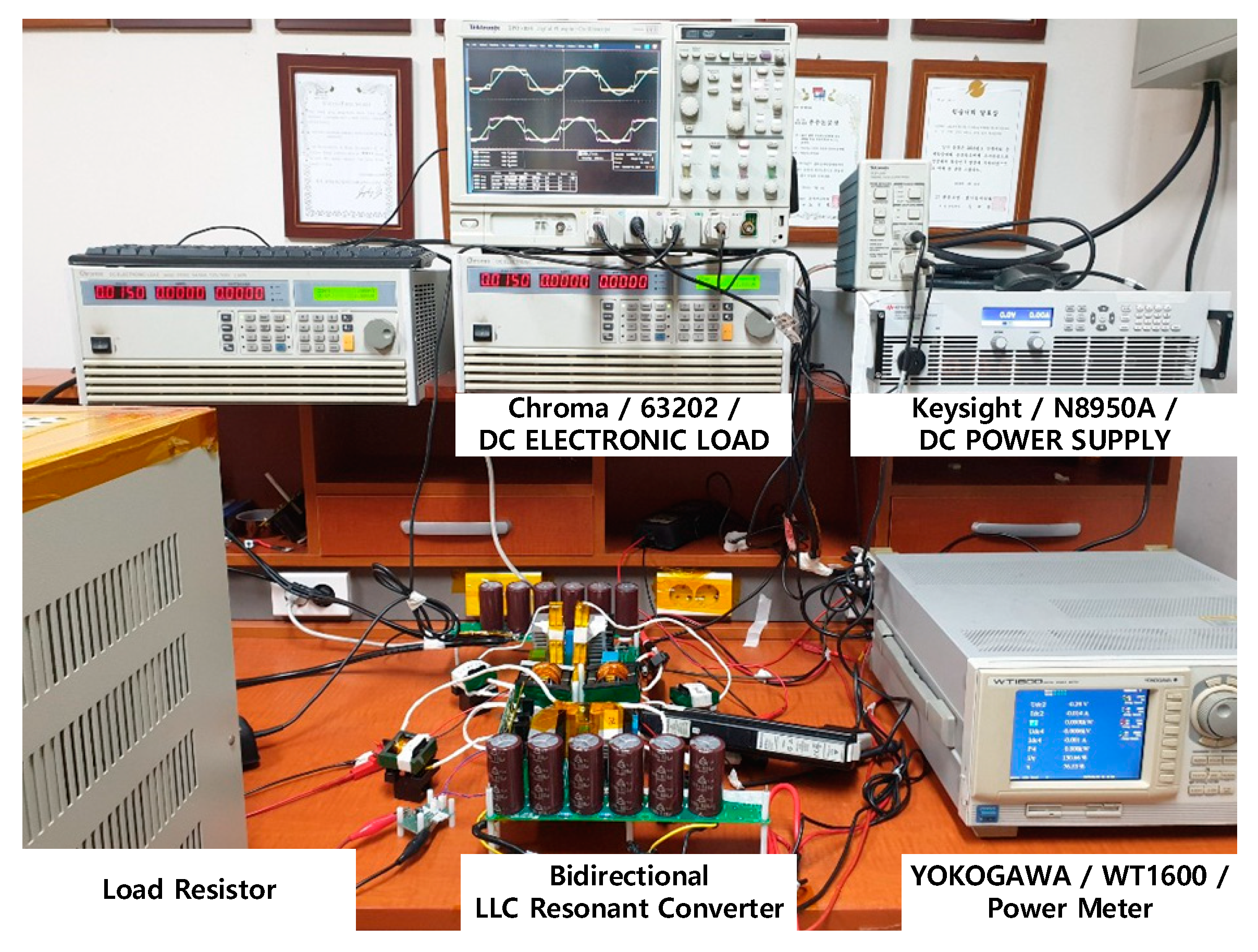
| Specification/Parameters | Values |
|---|---|
| Input voltage (VIN) | 750 VDC |
| Output voltage (VO)/Power rating (PO) | 270 VDC–430 VDC/3.3 kW |
| Switching Devices (Q1–Q4) | UJ3C120040K3S(1200 V, 65 A, RDS: 35 mΩ, SiC) |
| Switching Devices (S1–S4) | UJ3C065030K3S(650 V, 85 A, RDS: 27 mΩ, SiC) |
| Resonant Capacitors [(Cr1,Cr2)/CR1,CR2)] | 10.5 nF/56 nF |
| Resonant Inductors [(Lr1,Lr2)/LR1,LR2)] | 22.1 uH/4 uH |
| Resonant Frequency [frF/frR: Forward/Reverse] Switching Frequency Range (fs) | 296.3 kHz/303.7 kHz 220 kHz–600 kHz |
| Forward operation mode | |
| Primary self-inductance [T1/T2: LlPF1 + LmP1/LlPF2 + LmP2] | 61.4 uH/61.1 uH |
| Secondary self-inductance [T1/T2: LlSF1 +1/LmP1/LlSF2 + 1/LmP2] | 11.73 uH/11.65 uH |
| Primary magnetizing Inductance [T1/T2: LmP1/LmP2] | 57.65 uH/57.28 uH |
| Turn-ratio [] | 2.25 [18 T(14 T + 2 T + 2 T)/8 T] |
| Reverse operation mode | |
| Primary self-inductance [T1/T2:LlPR1 +LmS1/LlPR2 + LmS2] | 35.06 uH/35.28 uH |
| Secondary self-inductance [T1/T2: LlSR1+LmS1/LlSR2 + LmS2] | 11.73 uH/11.65 uH |
| Secondary magnetizing Inductance [T1/T2: LmS1/LmS2] | 11.04 uH/11.13 uH |
| Turn-ratio [] | 1.75 [14 T/8 T] |
© 2019 by the authors. Licensee MDPI, Basel, Switzerland. This article is an open access article distributed under the terms and conditions of the Creative Commons Attribution (CC BY) license (http://creativecommons.org/licenses/by/4.0/).
Share and Cite
Kim, E.-S.; Oh, J.-S. High-Efficiency Bidirectional LLC Resonant Converter with Primary Auxiliary Windings. Energies 2019, 12, 4692. https://doi.org/10.3390/en12244692
Kim E-S, Oh J-S. High-Efficiency Bidirectional LLC Resonant Converter with Primary Auxiliary Windings. Energies. 2019; 12(24):4692. https://doi.org/10.3390/en12244692
Chicago/Turabian StyleKim, Eun-Soo, and Jae-Sung Oh. 2019. "High-Efficiency Bidirectional LLC Resonant Converter with Primary Auxiliary Windings" Energies 12, no. 24: 4692. https://doi.org/10.3390/en12244692




